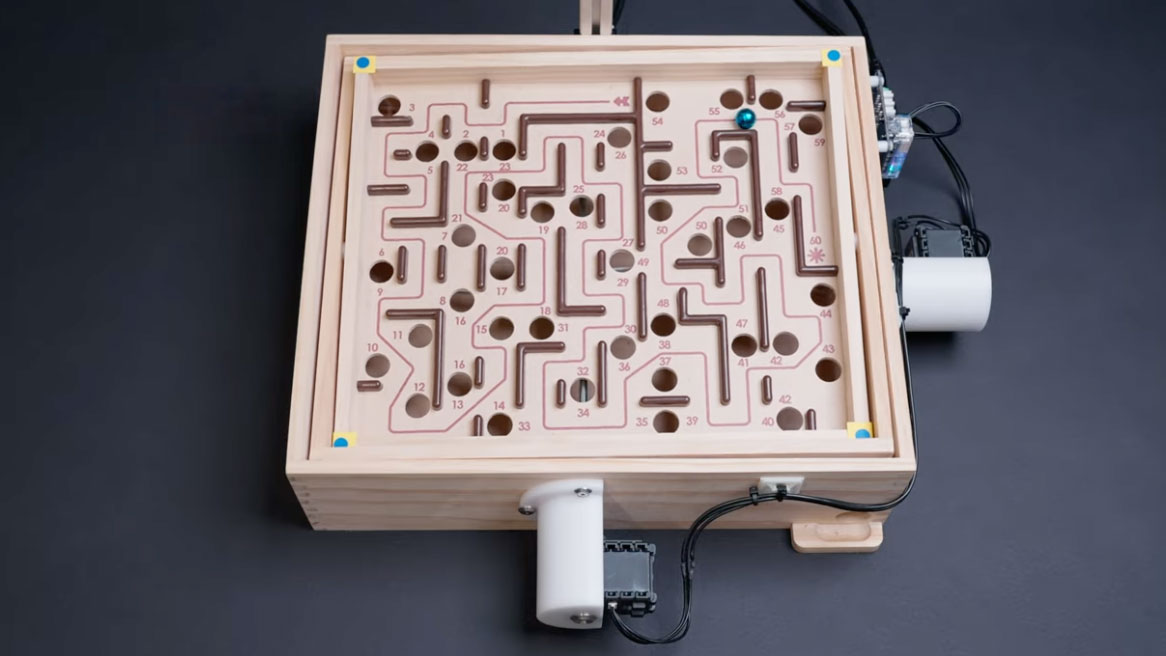My jaw hit the floor when I watched an AI master one of the world’s toughest physical games in just six hours

An AI just mastered Labyrinth in six hours, and I'm questioning my own existence.
I started playing Labyrinth in the 1970s. While it may look deceptively simple and is completely analog, Labyrinth is an incredibly difficult, nearly 60-year-old physical board game that challenges you to navigate a hole-filled maze with a metal ball by changing the orientation of the game platform using just the rotating studs on two adjacent sides of the game's box frame.
I still remember my father bringing Labyrinth home to our apartment in Queens, and my near-total obsession with mastering it. If you've never played, you have no idea how hard it is to hold a metal ball on a narrow path between two holes, waiting to devour it.
It's not like you get past a few holes and are free again; there are 60 along the entire winding path. One wrong move and the ball is swallowed and you have to start over. It takes fine motor control, dexterity, and a lot of real-time problem solving to get through unscathed. I may have successfully walked the treacherous route a few times.
Sometimes it ignored the path and took a shortcut. That's called cheating.
In the intervening years I played sporadically (once memorably with a giant labyrinth at Google I/O), but mostly I forgot about the game, though I never really forgot the challenge.
Maybe that's why my jaw dropped as I watched CyberRunner Learn and beat the game in just six hours.
In a recently released video, programmers from public research university ETH Zurich showed off their bare-bones AI robot, which uses a pair of actuators that act as the “hands” to rotate the Labyrinth nobs, an overhead camera to watch the action, and a computer which runs an AI algorithm to learn and ultimately beat the game.
In the video, developers explain that “CyberRunner leverages recent advances in model-based reinforcement learning and its ability to make informed decisions about potentially successful behaviors by planning for the future.”
Initially, CyberRunner was no better than me or any other average human player. It dumped the metal ball into holes less than a tenth of the way, and then less than a fifth of the way. But with each attempt, CyberRunner got better – and not just a little better, but exponentially.
According to the video, “CyberRunner can complete the maze faster than ever before.”
The video is breathtaking. The two motors make the board wobble at a superhuman speed and manage to keep the ball so perfectly on track that it is never in danger of falling into any of the holes. CyberRunner's final fastest time was an astonishing 14.8 seconds. I think my best time was… well, it could often last many minutes.
I vividly remember playing, and sometimes parking the ball in the maze, taking a break halfway through the challenge to prepare myself for the rest of the still-tricky journey ahead. This does not apply to CyberRunner. The trust is the kind that is only possible with an AI. He doesn't have to worry about dropping his metal ball into a hole; no fear of failure.
Initially, it was also not afraid of being caught cheating.
As CyberRunner learned, it did what computers do and looked for the best and fastest path through the maze, which meant sometimes it ignored the path and took shortcuts. That's called cheating. Fortunately, the researchers captured and reprogrammed CyberRunner to navigate the entire maze.
Of course, CyberRunner's achievement isn't just about beating people in a very difficult game. This is a demonstration of how an AI can solve problems in the physical world based on vision, physical interaction and machine learning. The only question is: what real-world problems will this open source project solve next?
As for me, I have to get my Labyrinth from my parents' closet.
